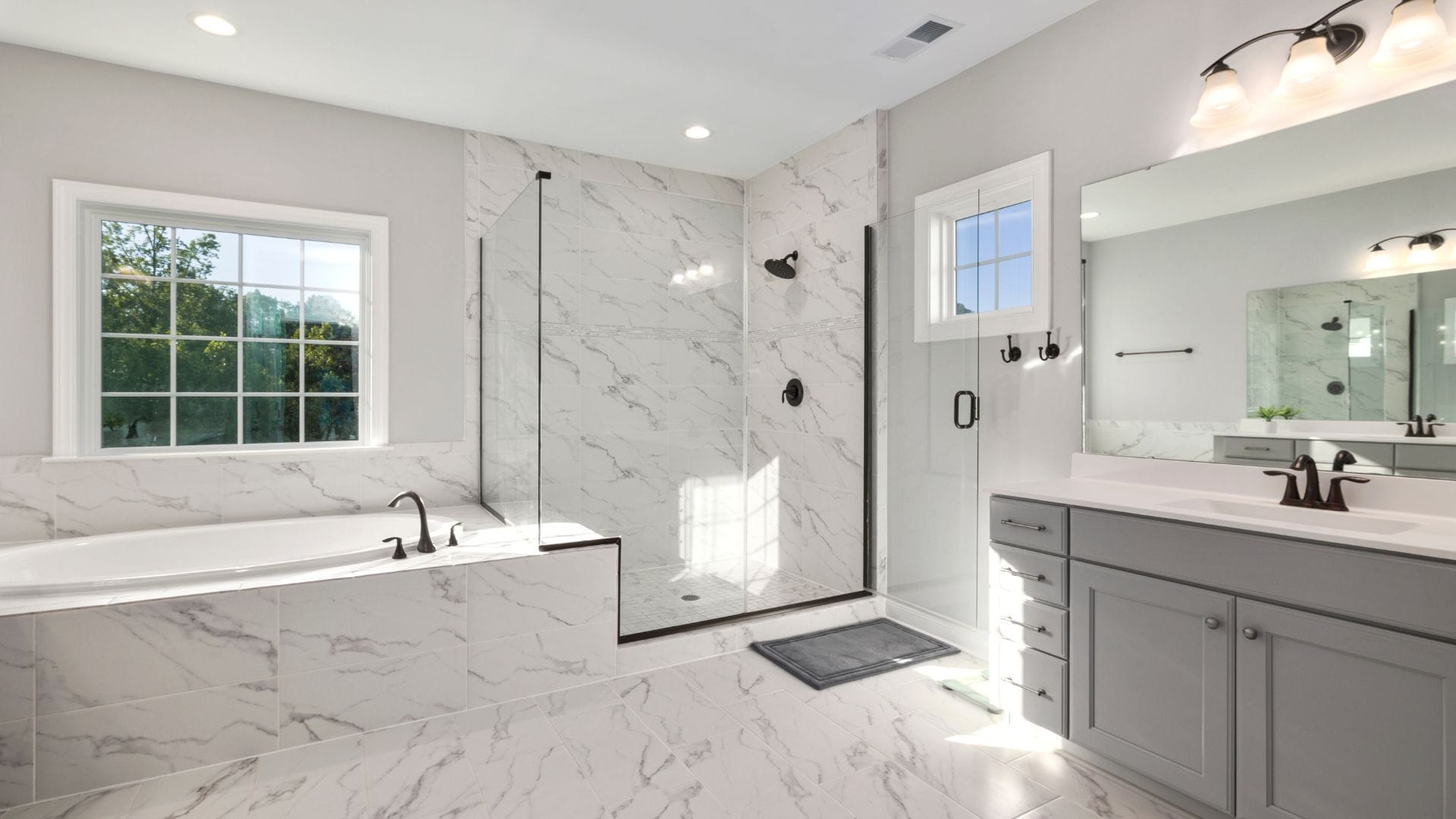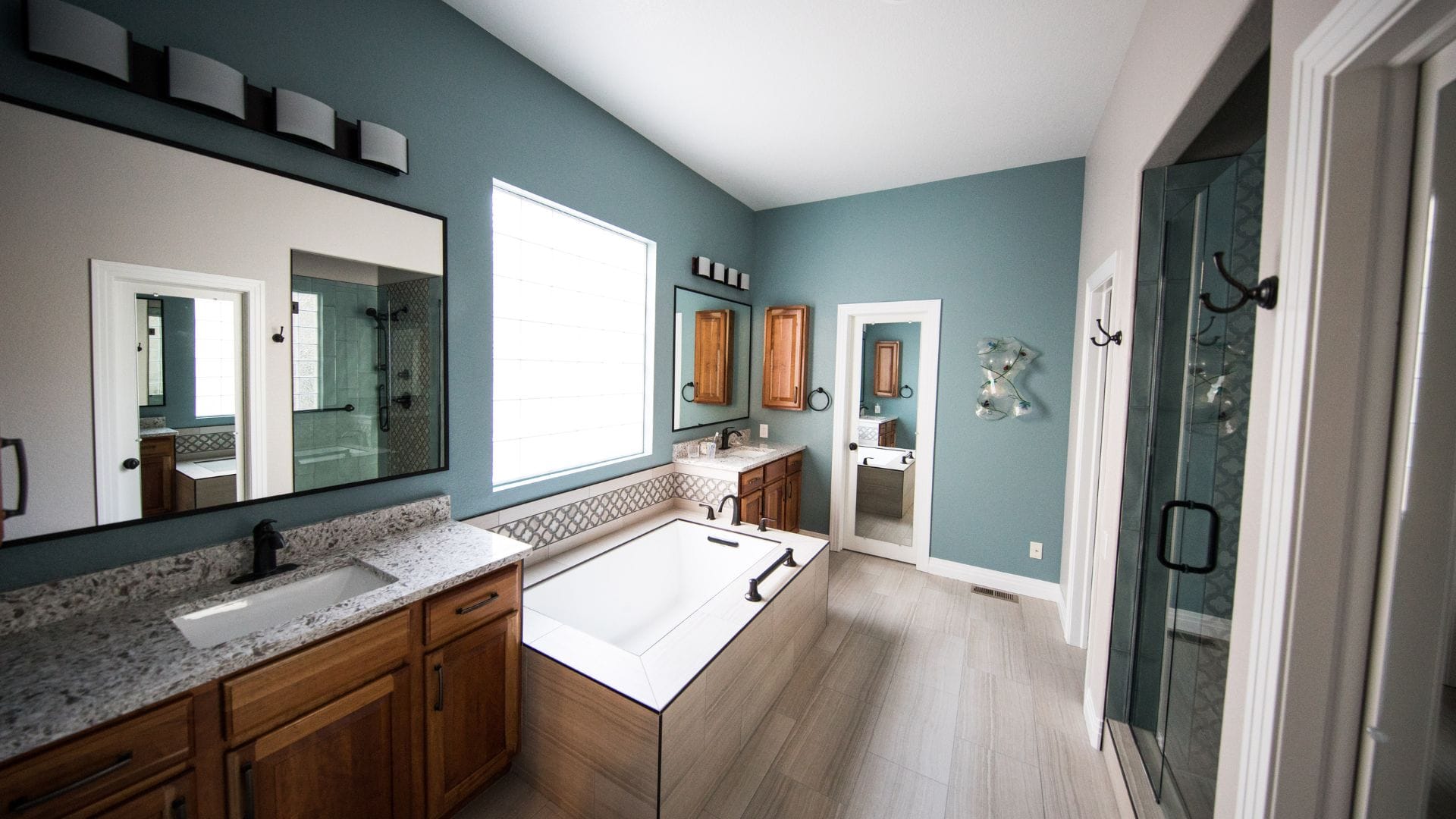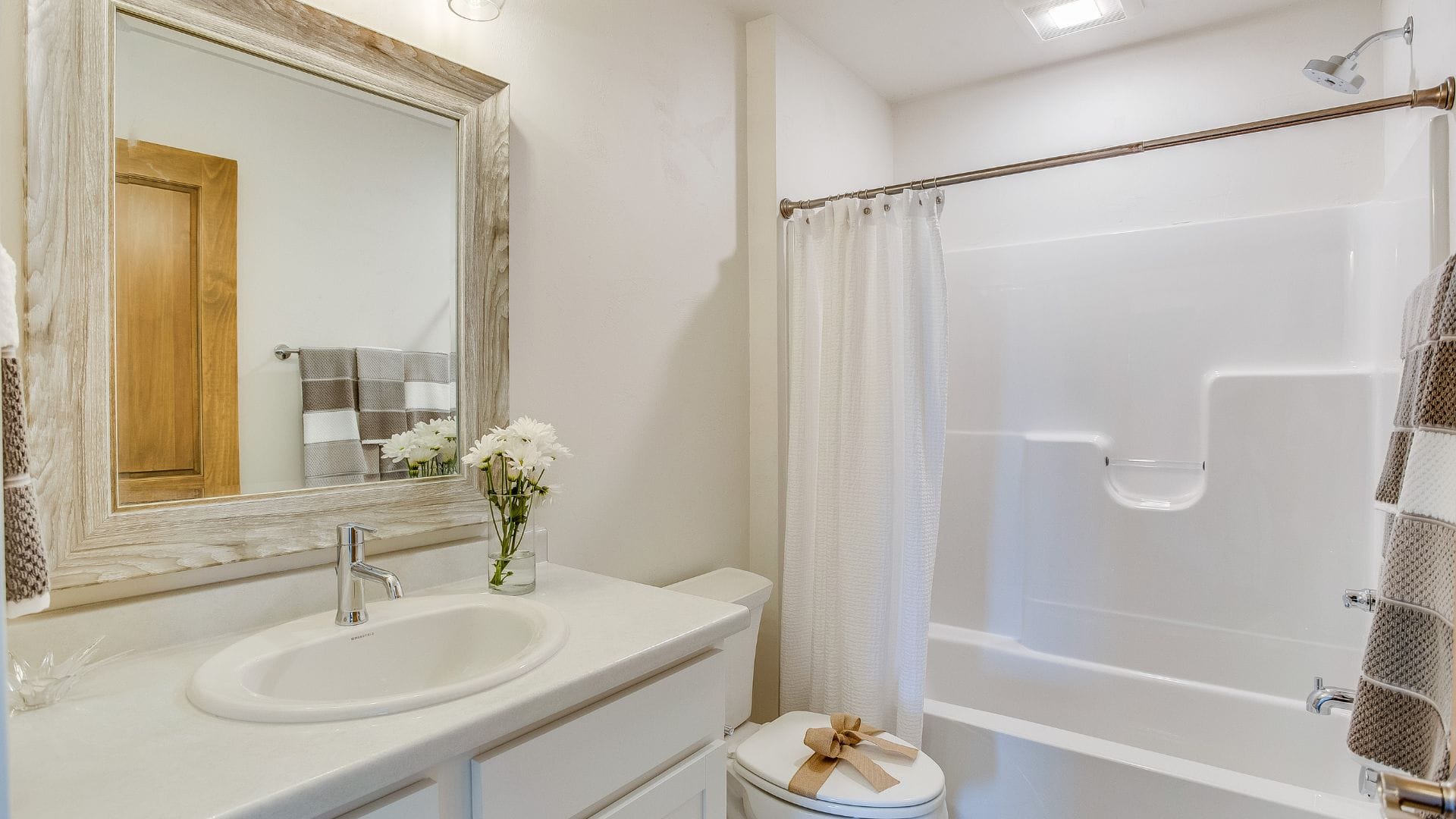
Dual-Handle vs Single-Hole Faucets: Which to Choose?
Choosing between a dual handle faucet and a single hole faucet may seem like a small decision but in bathroom

Ready to start a bathroom renovation? It’s going to be an exciting adventure! This guide will show you everything about bathroom remodeling, from planning to finishing. Whether you want a spa-like bathroom or a practical space for your family, we’ve got lots of ideas and tips for you.
Bathroom remodeling projects can be simple or big changes. Costs vary from $5,000 for small updates to over $30,000 for fancy makeovers. The time needed can be 2 to 4 weeks, depending on how big your project is.
Before you start designing your bathroom, setting a budget and timeline is important. This helps keep your project on track and avoids surprises. Good planning is essential for a successful bathroom makeover.
As you begin this exciting journey, remember you might need permits for big changes like plumbing or electrical work. So, let’s get ready to create your dream bathroom!
A bathroom renovation can turn your space into a luxury retreat. The first step is careful planning. Start with a detailed checklist and budget. Use Pinterest and Instagram to gather design ideas.
First, set a budget for your renovation. Then, get quotes from contractors to refine it. Remember to include materials, labor, and unexpected costs. Don’t forget about lighting, electrical, and plumbing updates.
Get all permits before starting. This ensures your project meets local codes. Hire licensed pros for plumbing, electrical, and HVAC to save time and money.
Make a detailed design plan for your bathroom. Include layout changes and aesthetic goals. Use online tools to see different designs. Visit stores to see fixtures in person. This helps you make better choices for your project.

A successful bathroom remodel needs careful planning and the right tools. Safety gear is key, with 75% of DIY projects needing top-notch protective items. You’ll need goggles, gloves, and a respirator to stay safe during demolition and construction.
For the remodel, gather hand and carpentry tools. A tape measure, hammer, drill, and caulking gun are must-haves. Specialty tools like a reciprocating saw and oscillating multi-tool will make demolition easier. Don’t forget a basic flat pry bar for removing old fixtures.
When choosing materials, start with the basics. You’ll need cement board for wet areas and moisture-resistant drywall for walls and ceilings. For plumbing, PVC-based pipes are the go-to choice for new drain or vent installations. Remember to pick up water line extensions for fixture installations.
Choosing bathroom fixtures is exciting. Select a new toilet, sink, bathtub, or shower that fits your style and budget. For flooring, ceramic or porcelain bathroom tiles are popular due to their durability and water resistance. Don’t overlook bathroom lighting – a layered approach with ambient, task, and accent lights creates a functional and inviting space.
Finally, stock up on finishing materials like grout, caulk, and paint. These details will bring your new bathroom to life. With the right tools and materials on hand, you’ll be well-prepared to tackle your bathroom remodeling project.
Remodeling a bathroom can change your space and boost your home’s value. A typical bathroom renovation in NYC takes 2-4 months. Construction lasts 4-8 weeks. The process involves several key steps for a successful transformation.
Begin by removing old bathroom fixtures and materials. This step prepares your space for the new design. Be careful when removing tiles and fixtures to avoid damage. A ‘rip and replace’ remodel is often the simplest choice for homeowners.
Then, update plumbing and electrical systems. This might include moving pipes or adding outlets for modern fixtures. NYC building codes are strict, so it’s crucial to work with licensed professionals for these tasks.
Prepare walls and floors for new materials. This may involve installing cement board in wet areas or leveling floors. Consider heated flooring for comfort. Proper preparation ensures your new bathroom fixtures and finishes will last longer.
Finally, install your new bathroom fixtures and vanities. This step brings your design to life. Consider space-saving options like wall-mounted sinks or compact tubs. Quality bathroom vanities can provide both style and storage. Remember, tub-to-shower conversions are popular for improving accessibility.
Throughout the bathroom renovation process, stay flexible and patient. Unexpected challenges may arise, but with careful planning and professional help, you can create the bathroom of your dreams.

Creating your dream bathroom starts with choosing the right design elements. A well-planned bathroom design combines style, function, and comfort. Let’s explore key aspects to consider when selecting materials and fixtures for your new space.
Bathroom tiles play a crucial role in setting the tone for your space. Subway tiles remain a popular choice, offering versatility and timeless appeal. When selecting bathroom tiles, limit yourself to three options to avoid overwhelming the design. For flooring, pick materials that are both water-resistant and slip-proof to ensure safety and durability.
Incorporate modern fixtures to elevate your bathroom design. Brass accents add a touch of elegance and warmth. Stick to two metal finishes at most to maintain a cohesive look. If you’re eyeing a wooden vanity but it’s beyond your budget, consider wooden accessories like vases or planters to bring in natural textures.
Proper bathroom lighting is essential for both function and ambiance. Include task lighting around the vanity area for grooming activities. Add ambient lighting to create a relaxing atmosphere. Don’t forget about ventilation – a good exhaust fan prevents moisture buildup and keeps your bathroom fresh.
To visualize your bathroom design, create a mood board using online tools like Photoshop. This helps ensure all elements work well together. Remember to factor in your budget when making selections. Websites like Wayfair offer competitive prices on tiles and even provide samples for a small fee. By carefully planning your bathroom design elements, you’ll create a space that’s both beautiful and functional.
Choosing between professional installation and DIY for your bathroom renovation is tough. DIY can cut labor costs in half, saving you money. For example, painting the bathroom yourself could save $380 to $800.
However, DIY projects take longer. A job that pros finish in 4-5 weeks might take 6 months for you.
Bathroom contractors offer expertise and efficiency. They use specialized tools and quality materials for a durable finish. Plus, they provide warranties for your peace of mind.
They also handle complex tasks like plumbing and electrical work safely. This is important for your safety and the job’s quality.
If you’re good with plumbing, wiring, and flooring, DIY might be for you. You’ll control the design and execution. But for big changes or fixture installations, it’s best to hire pros.
They work faster and safer, saving you money by avoiding mistakes. Your choice depends on your skills, budget, and time. Whether DIY or professional, planning is crucial for a successful renovation.

Bathroom remodeling doesn’t have to be expensive. A small update can cost under $10,000 and increase your home’s value by up to 60%. Let’s look at some ways to refresh your bathroom without spending a lot.
Think about using luxury vinyl tile instead of ceramic for your floor. It’s tough, water-proof, and has many designs. For vanities, choose stock options from big stores. This can save you a lot of money without losing style.
Refinishing old tubs and cabinets can save you money compared to replacing them. Paint your cabinets to give them a new look. Light colors like Benjamin Moore’s “White Dove” can make your bathroom look bigger and more welcoming.
Use smart design tricks to make the most of your space. Install tall cabinets that go up to the ceiling for more storage and style. Use recessed shelves in showers or above toilets for a clean look and easy access to essentials. Hang towels on hooks instead of bars to save space and add a modern touch.
Small changes can make a big difference. Upgrading to energy-efficient LEDs or adding a big mirror can make your bathroom look bigger. With these tips, you can get a stylish bathroom update without spending too much.
Starting a bathroom renovation can be thrilling and a bit scary. This guide has helped you with everything from budgeting to picking the right design. The cost of making over your bathroom can change a lot, from a few thousand to over $100,000, based on your choices.
Think about your style and what you need when planning your bathroom remodel. Find ideas in magazines and online, but remember to keep things practical. Choose between classic tiles or natural stone that fits your budget and lifestyle.
If you’re good with tools, doing your bathroom yourself can be fun. But, for tricky jobs like plumbing and electrical, it’s best to get help from experts. Make sure to include important things like GFCI outlets and lots of storage. By mixing your dream with what’s practical, you’ll get a bathroom that’s beautiful and useful.

Choosing between a dual handle faucet and a single hole faucet may seem like a small decision but in bathroom
Receive your order to your door address anywhere in the world using our shipping partners
You're covered by our 30 days return policy
Big part of our reviews testifies about the quality of support provided
Secured payments using renowned payment gateways